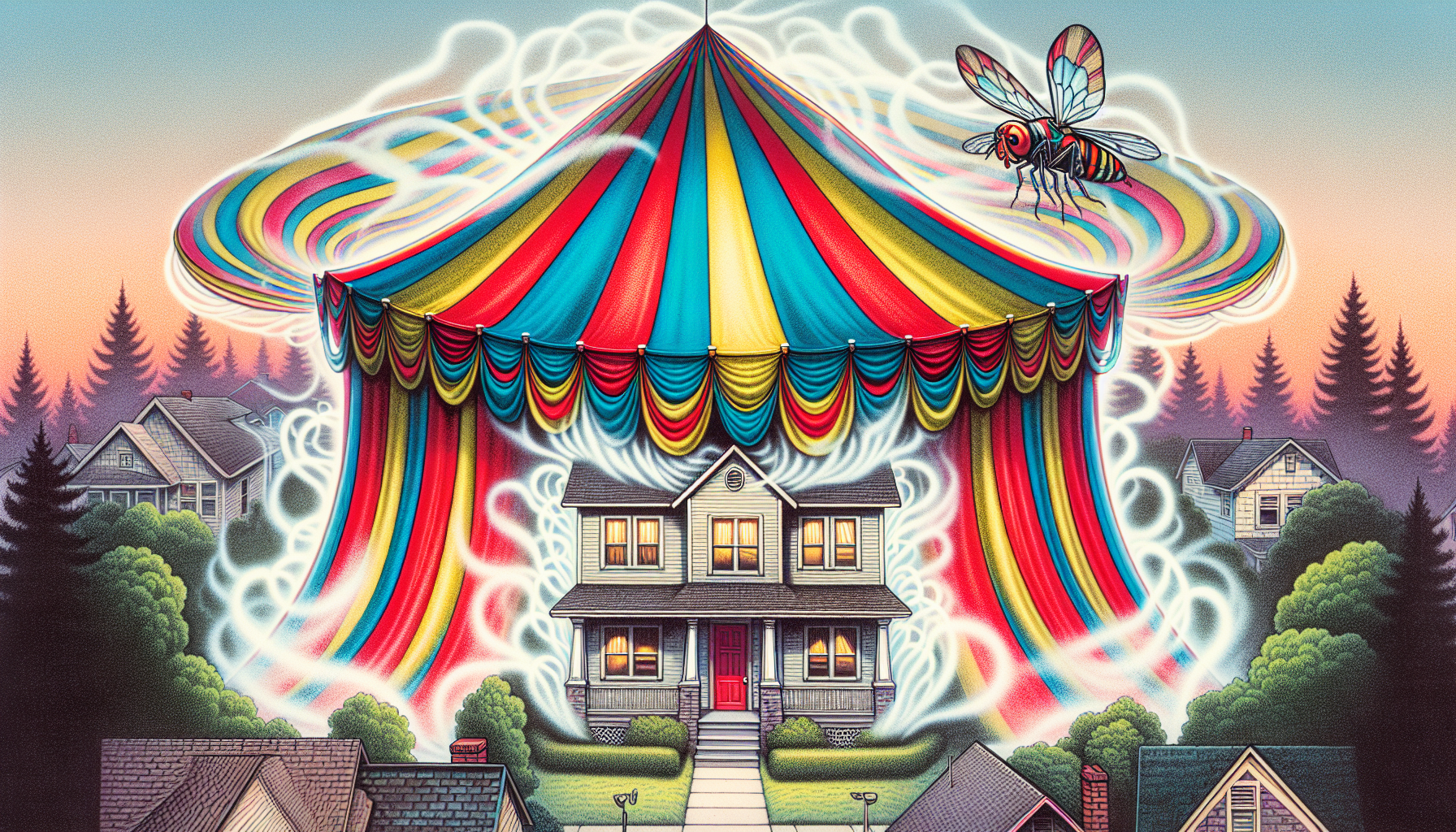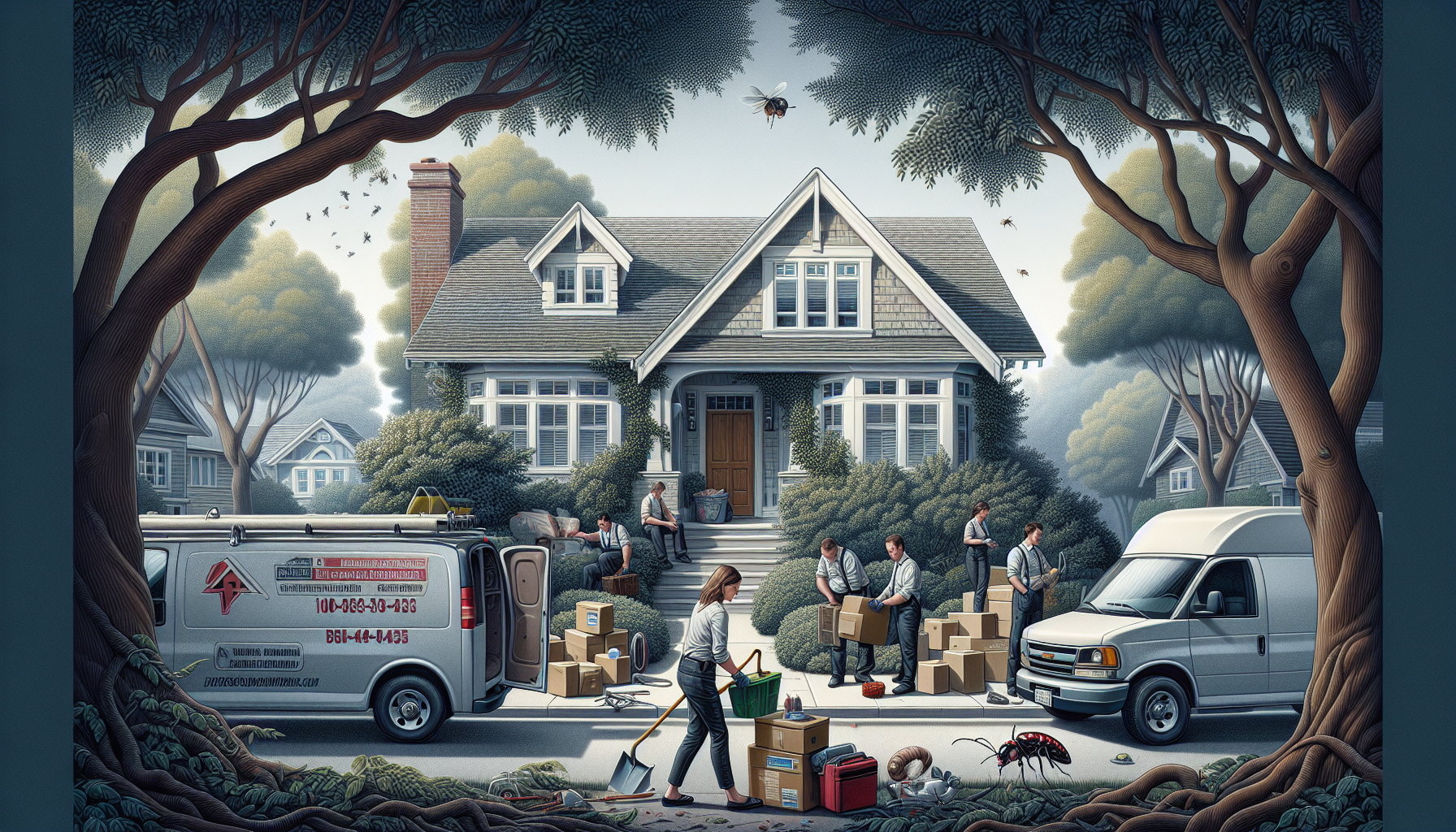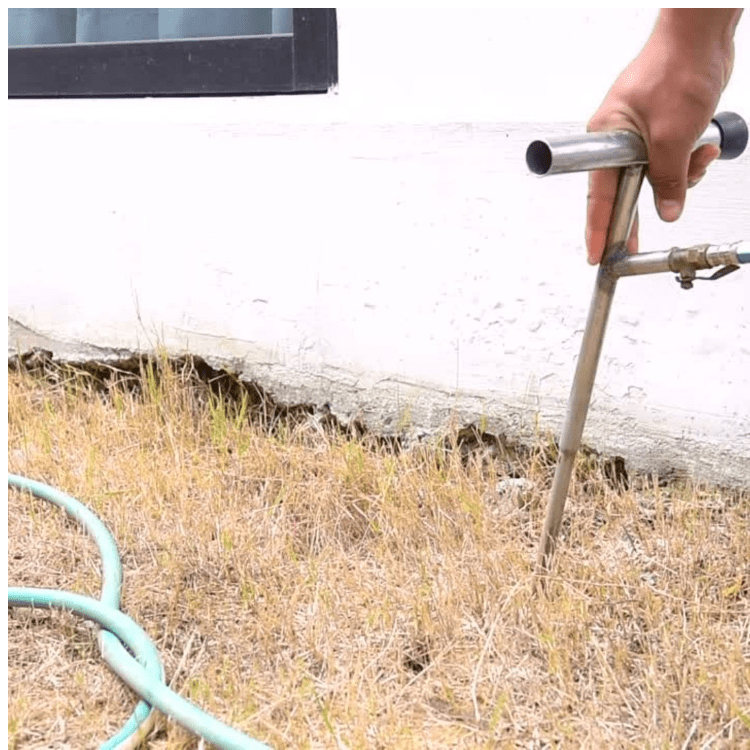Understanding Fumigation Cost: A Comprehensive Guide to Budgeting for Pest Control
Wondering about the fumigation cost for your pest issue? While prices typically fall between $2,000-$8,000, factors like home size and infestation type determine your actual cost. This guide offers a detailed look at what influences this range so you can anticipate your expenses—without the fluff.
Key Takeaways
Fumigation costs can range from $2,000 to $8,000 and are influenced by factors such as home size, infestation type, and treatment frequency, with costs calculated at $1 to $4 per square foot or more for severe termite infestations.
The comprehensive fumigation service includes tenting, release and distribution of fumigants like magnesium phosphide and sulfuryl fluoride, a procedure ensuring safety and effectiveness, and air quality tests post-treatment.
In preparation for fumigation, homeowners face responsibilities like vacating the premises, sealing or removing sensitive items, and may incur additional expenses including accommodation, professional cleaning, and gas service reconnection.
Breaking Down Fumigation Costs

When pests take residence in your abode, the fumigation process becomes a beacon of hope for restoring tranquility. However, this beacon does not shine without cost. Fumigation costs can vary widely, typically ranging from $2,000 to $8,000, influenced by factors such as the size of your home, the type of infestation you’re battling, and the frequency of treatments required. These numbers may seem daunting, but with the right information, you can navigate through the costs with confidence.
Grasping the interplay of these factors will help you anticipate the investment required to maintain a pest-free environment. The size and complexity of your structure, the severity of the infestation, and the nature of the pests all play pivotal roles in the final bill. It’s not just about the initial fumigation—ongoing maintenance and the possibility of multiple treatments could affect your wallet over time. Continue reading for a deeper insight into each contributing factor, which will help you make informed decisions about your fumigation strategy.
Size Matters: Calculating Cost by Square Footage
When it comes to fumigation, size really does matter. The cost of fumigation is primarily calculated by the square footage of your home, with prices usually falling between $1 to $4 per square foot. This means for a standard 2,000-square-foot house, you’re looking at a potential range of $2,000 to $8,000 to rid your home of invaders. It’s not just the space inside the walls that counts—the fumigation tent that envelops your home is part of this square footage equation, representing a vital component of your fumigation costs.
Even the coziest of spaces, such as a studio apartment, require meticulous attention during the fumigation process. The tenting procedure ensures that the fumigant is evenly distributed throughout every nook and cranny of your dwelling, regardless of its size. Let’s not forget, the bigger the property, the more material and labor will be needed to cover it, naturally inflating the costs. This is why grasping the correlation between square footage and cost is fundamental in properly budgeting your pest control treatment.
Identifying Your Pests: Cost Variations by Infestation Type
The type of uninvited guests lurking in your home also plays a significant role in the cost of fumigation. Not all pests are created equal—some, like termites and bed bugs, require more complex and thus pricier treatments. For instance, termite infestations can be particularly stubborn, with termite fumigation costs varying from $1 to $4 per square foot or even $10 to $20 per linear foot depending on the fumigation method employed. It’s not just about the size of the problem; it’s about the severity and the type of pest at hand.
Different pests call for different pest control treatments, and the cost of these treatments can be influenced by the severity of the pest infestation. While termites might send you searching for termite inspection services, other pests such as insects or rodents could be handled by pest control companies. A more general pest control company can address these issues, but severe infestations may require more intensive and frequent treatments, pushing up the cost of fumigation. Thus, when you detect scurrying sounds at night or signs of tiny invaders, scheduling a pest inspection can be as significant to your budget as it is to your tranquility.
Frequency and Follow-Up: The Price of Repeated Treatments
The battle against pests may not always be won with a single fumigation service. In cases where the infestation is tenacious, repeated treatments may be necessary, leading to increased fumigation costs. Consistent invasions can rapidly double or triple initial expenses, making the fight against pests not only a battle of wits but also one of financial resilience. It’s a stark reality that the cost of eradicating pests can rise swiftly with each subsequent treatment needed.
Adopting an effective pest control strategy from the outset can help mitigate these costs over time. Rotating fumigation chemicals can enhance treatment efficacy and reduce the chances of pests developing resistance, potentially lowering the overall fumigation costs in the long run. It’s clear that the chosen fumigation techniques and the frequency of treatments wield a significant influence over the final bill. Hence, it’s essential to balance the long-term implications of your pest control plan with the immediate costs.
What’s Included in the Price of Fumigation Services?

When you enlist fumigation services, you’re not just paying for the eradication of pests; you’re investing in a comprehensive approach to ensure your home is thoroughly cleansed of any infestation. The fumigation process involves:
The release of gaseous fumigants that blanket your entire home
Penetrating every potential hideout of those unwelcome inhabitants
The use of chemicals such as magnesium phosphide and sulfuryl fluoride
Chemicals that are designed to leave no residue, ensuring your belongings are unharmed by the treatment.
Rest assured, your furniture, clothing, and carpets will emerge from the tent fumigation process unscathed. The whole fumigation process, which typically includes a 24-hour treatment followed by a six-hour aeration process, is meticulously planned and executed by professionals to guarantee safety and effectiveness. After the fumigant is released and the fumigation tent removed, air quality tests are conducted to ensure the home is safe for re-entry.
From start to finish, even in the most extreme infestations, the entire process can span from a single day to a full week, depending on the size of the area treated and the severity of the infestation.
The Fumigation Tent: A Necessary Expense
The iconic image of a home shrouded in a fumigation tent is not just for show—it’s an integral part of the fumigation process. This tent acts as a containment system, ensuring the fumigant remains within the structure and spreads effectively to eradicate the pest problem. The expense of the tenting procedure is included in the total cost of fumigation, reflecting the essential role it plays in a successful pest control treatment.
Factors such as building size and structural complexities can influence the cost of fumigation, affecting the resources needed for proper tenting. The tent ensures the fumigant penetrates every crevice of your home, from crawl spaces to attic corners, making it a necessary investment for a thorough eradication. When considering the cost of fumigation, remember that the tent is your ally in the fight against pests, a crucial element in ensuring the effectiveness of the treatment.
Labor and Expertise: The Value of Professional Pest Control Treatment
The expertise of professionals cannot be overstated in the realm of pest control treatment. Fumigation is an exact science, requiring a team of skilled technicians to handle the fumigants and monitor the entire process. The risks of inadequate handling are great, including chemical burns and poor ventilation, not to mention the potential for electrical shocks and fires. This is why labor costs are a significant part of the overall fumigation expenses.
A professional pest control company ensures the correct application of chemicals, preventing overuse and unnecessary exposure to potent fumigants like methyl bromide or sulfuryl fluoride. The value of this expertise is immeasurable, safeguarding your home and its occupants from the array of risks that come with attempting a DIY fumigation. When contemplating the cost of fumigation, understand that you are also investing in your peace of mind, with the assurance that the task will be executed safely and effectively.
Preparing for Fumigation: Associated Costs and Responsibilities

Before the fumigation tent rises over your home, there’s a checklist of preparations and responsibilities to be tackled. Homeowners must:
Trim back foliage and landscape to make room for the fumigation tarps
Water the soil around the home’s exterior to protect outdoor plants
Provide the keys to your kingdom to allow the pest control team to perform their magic
It’s a necessary prelude to the main event, ensuring the stage is set for an effective fumigation process.
The process of fumigation requires several steps and precautions:
All living organisms, including plants, pets, and people, must vacate the premises to ensure safety.
Special items, such as baby mattresses or food intended for consumption, need to be removed or sealed in special double-bagged containers.
Homeowners should brace for additional costs, such as professional cleaning or potentially replacing items that remained in the house during fumigation.
Once the pests are ousted, you’ll need to reconnect with the gas company to restore service to your home.
This process is filled with details, each contributing its own share to the total fumigation budget.
Relocation Expenses: Accommodating Your Family and Pets
The fumigation process doesn’t just displace pests; it also means you and your furry friends will need a temporary change of scenery. Leaving your entire home in the hands of pest control professionals typically requires a stay of about three days and two nights, necessitating accommodations elsewhere. The cost of hotel stays or alternative lodging can add up quickly, ranging from $100 to $200 per night, depending on location and amenities.
Beyond the roof over your head, there are additional expenses to consider, including the cost of food and any other necessities while you’re away from the comforts of home. You might also face the costs of professional cleaning services to ensure your house is pristine upon your return, especially if sensitive items like tobacco products or metal bottles were left inside during fumigation. This is a major aspect of fumigation budgeting, requiring careful planning and consideration for effective management.
Pre-Treatment Preparations: Potential Additional Services
The necessary preparations for fumigation often extend beyond personal arrangements. Homeowners may need to enlist additional services to ensure their home is ready for the intensive treatment. Such services could include professional cleaning, which not only prepares your home for fumigation but also provides a clean slate post-treatment. Following detailed instructions for pre-treatment preparations can also help avoid the need for costly follow-up services.
These preparations are not just busywork; they are vital steps to guarantee the effectiveness of the fumigation process. Items such as plants, food, and other sensitive materials need special attention and may require unique solutions like heat treatments or special packaging. Ensuring that your home is properly prepared for fumigation can prevent additional expenses and contribute to the overall success of the treatment.
Comparing Alternatives: Fumigation vs. Other Treatment Methods
The fumigation tent may be the most recognizable symbol of pest control, but it’s far from the only option. Alternative pest control methods such as liquid treatments, heat treatments, and microwave treatments offer a variety of approaches for tackling different types of infestations. Spot treatments and liquid sprays target specific areas where pests have been identified, while heat treatments eradicate pests by raising the temperature to fatal levels, all without the use of chemicals.
Microwave treatments, on the other hand, are specially designed for localized termite control, and dry powder treatments offer a slower breakdown, providing long-term protection against future invasions. Each alternative comes with its own set of advantages and cost implications.
In terms of pest control, it’s essential to evaluate the fumigation method in tandem with these alternative treatments to identify the most effective and cost-efficient solution for your specific pest issue.
Long-Term Savings: Preventing Future Infestations
Investing in regular pest control treatment is not just about addressing the current problem; it’s about safeguarding your home against future invasions and prevent future infestations. Regular professional pest control can help uphold a safe and healthy living environment, eradicating continuous threats and controlling pest populations using eco-friendly methods. By nipping pest problems in the bud, you can avoid severe property damage and save on costly repairs and replacements.
The health benefits are also noteworthy, as preventing pest infestations can reduce medical expenses related to illnesses and allergies caused by pests. A regular cleaning regime, with special attention to food storage and trash disposal, can significantly reduce the likelihood of future infestations. Maintaining a clean environment is not only conducive to a pest-free home but also contributes to long-term savings by avoiding the damage and health issues that pests can bring.
How to Minimize Fumigation Expenses
The prospect of fumigation costs can be as disturbing as the pests themselves, yet you can take proactive measures to control expenses. Here are some preventative measures you can take to deter pests and reduce the likelihood of needing fumigation:
Ensure wood is not in contact with the ground to deter termites.
Seal exterior holes and cracks to prevent a variety of pests from infiltrating your home.
Regularly dispose of trash and use smell-proof containers to reduce the likelihood of attracting pests in the first place.
Implementing a rigorous cleaning schedule and storing food in sealed containers are simple yet effective strategies to minimize the chances of a pest takeover. Bear in mind, a clean home presents a strong defense against pests like cockroaches, which are drawn to food residue and shelter. By being diligent in these preventive measures, you can often avoid the need for fumigation altogether or at least reduce the frequency and therefore the cost of such services.
When Is Fumigation Unavoidable?
There are times, despite our best efforts, when fumigation becomes the only viable solution. This particularly holds true in scenarios of severe or widespread pest activity, where the infestation level outstrips the effectiveness of less invasive treatment methods. Drywood termite fumigation, known for its effectiveness against these destructive pests, and bed bugs, infamous for their resilience, often require the comprehensive approach that fumigation offers.
A professional pest control expert will take into account factors such as:
the severity of the infestation
the type of pest
the homeowner’s lifestyle
the property type
when determining whether fumigation is necessary. If you encounter a recurring pest issue notwithstanding previous control attempts, or if the infestation has reached an extreme degree, fumigation may be the advised course of action to guarantee total eradication.
Summary
As we reach the end of our comprehensive guide, it’s clear that a myriad of factors contribute to fumigation costs. From the size of your home to the type of pests and frequency of treatments, each element plays its part in the final tally. By understanding these components and preparing accordingly, homeowners can take control of their pest control budget. Regular maintenance, preventative measures, and staying informed can not only reduce immediate fumigation expenses but also prevent future infestations, leading to long-term savings. Let this guide be your roadmap to navigating the complexities of fumigation costs and reclaiming the comfort of your pest-free home.
Frequently Asked Questions
How much does fumigation typically cost?
Fumigation costs typically average between $2,000 to $8,000, depending on factors such as property size, pest type, and treatment frequency.
Can the type of pest affect the cost of fumigation?
Absolutely, the type of pest can indeed affect the cost of fumigation. For instance, termites and bed bugs often necessitate more intricate and costly treatment procedures.
What preparations are needed before fumigation?
Before fumigation, it’s important to trim back foliage, water the soil, provide property access, and evacuate all living organisms. Special packing may be needed for certain items (Source: Pest Control Pros).
Are there alternatives to fumigation?
Yes, there are alternative pest control methods like liquid treatments, heat treatments, and microwave treatments that may be more suitable and cost-effective depending on the infestation. Consider exploring these options for a more targeted solution.
Is it possible to minimize fumigation expenses?
Yes, homeowners can minimize fumigation expenses by taking preventative measures such as sealing entry points, storing food properly, maintaining cleanliness, and addressing pest problems promptly. These steps can help reduce the need for costly fumigation services.

